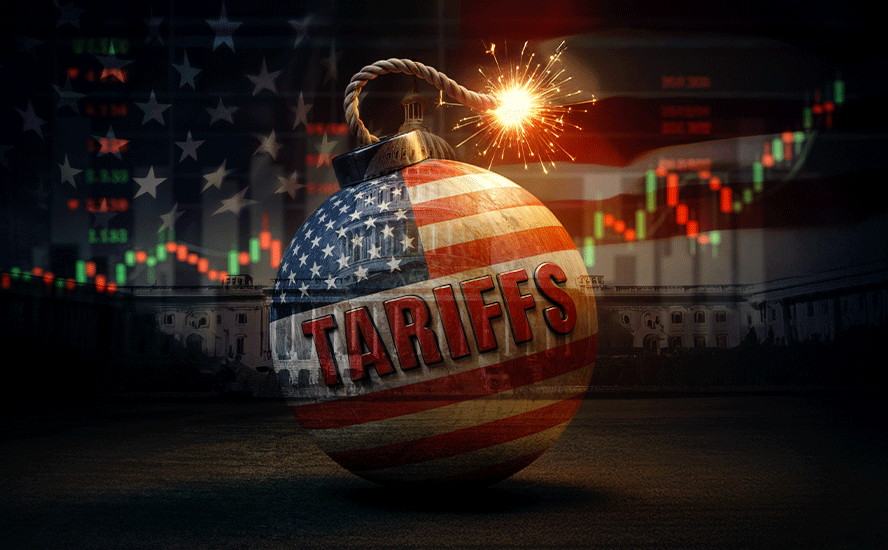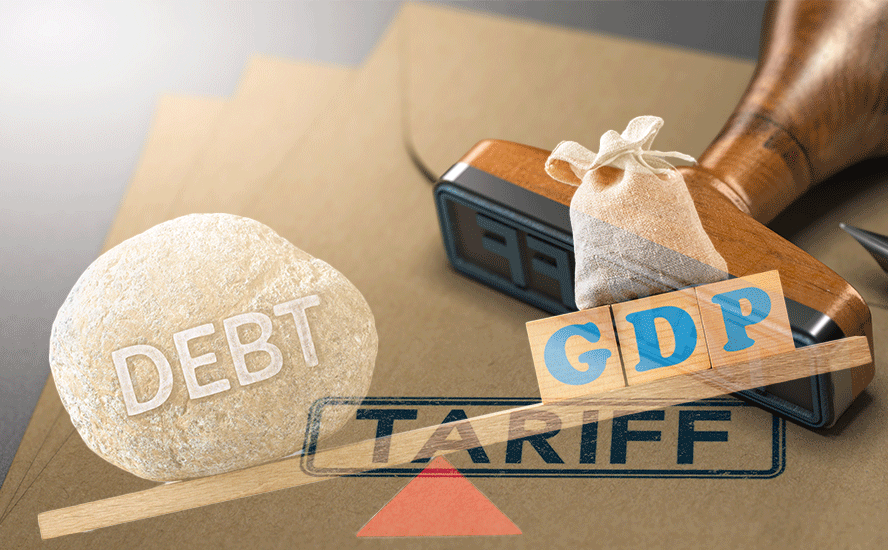Why China won’t go to war with Taiwan – Richard Mills
2023.03.03
Taiwan is a small, densely populated island about 100 miles off the coast of southern China. It sits on the “first island chain” that includes a list of US-friendly territories that are crucial to United States foreign policy, such as Japan, South Korea and the Philippines.
The island is slightly smaller than Maryland and Delaware combined, with a 2022 population of 24 million.


China sees self-ruled Taiwan as a breakaway republic that must be re-united with the Motherland. President Xi Jinping has said reunification with Taiwan “must be fulfilled” and has not ruled out the use of force to achieve this goal.
Taiwan’s view is the complete opposite, seeing itself as distinct from the Chinese Mainland, with its own constitution and democratic elections. Most residents support the status quo, with an overwhelming majority rejecting a “one country, two systems model” such as Beijing promised, then reneged on, for Hong Kong. In a 2021 poll, 62% said they regarded themselves as exclusively Taiwanese. But only a small number support immediate independence.
Caught in-between is the United States, which officially “acknowledges the Chinese position that there is but one China and Taiwan is part of China”, but continues to sell arms to the Taiwanese military.
Last summer the Biden administration committed a diplomatic faux-pas in dispatching a congressional team to Taiwan, including then-Speaker of the House Nancy Pelosi. Beijing saw the visit as a rebuke of the “One-China principle” and responded with its biggest-ever show of military force in the air and seas around Taiwan, including the firing of ballistic missiles.
If China were to take over Taiwan, some Western experts believe the country would be freer to project power in the Western Pacific region, possibly even threatening US bases as far away as Hawaii and Guam.
The question we’re asking here is, are the costs of an invasion worth it to China?
A brief history
Taiwan first came under Chinese control in the 17th century when the Qing dynasty began administering it, according to historical sources. In 1895, the Qing gave up the island to Japan after losing the first Sino-Japanese War.
After Japan lost WW II, China re-took Taiwan, but a civil war broke out between nationalist government forces led by Chiang Kai-shek and Mao Zedong’s Communist Party. When the Communists won in 1949, Chiang Kai-shek and the nationalist party, known as the Kuomintang, fled to Taiwan, where they ruled for the next several decades.

According to the BBC, China points to this history to say that Taiwan was originally a Chinese province. But the Taiwanese point to the same history to argue that they were never part of the modern Chinese state that was first formed after the revolution in 1911 — or the People’s Republic of China that was established under Mao in 1949.
Cross-strait tensions have escalated since the election of Taiwan’s current President, Tsai Ing-wen in 2016. Tsai has refused to accept her predecessor’s formula allowing for increased ties between China and Taiwan. In response, Beijing has taken increasingly aggressive actions, including flying fighter jets near the island.
Politically, there are two parties vying for power in Taiwan: the Kuomintang (KMT) and the Democratic Progressive Party (DPP). Taiwan’s KMT-drafted constitution continues to recognize China, Mongolia, Taiwan, Tibet, and the South China Sea as part of the “ROC” (Republic of China) as Taiwan is confusingly called.
The KMT does not support Taiwan’s independence and has consistently called for closer ties with Beijing. The DPP has never endorsed the understanding laid out in the so-called 1992 Consensus, reached between the Chinese Communist Party and the KMT. President Tsai, who is also the leader of the DPP, has refused to explicitly accept the consensus. Instead, she has attempted to find another formulation that would be acceptable to Beijing. (Council for Foreign Relations, ‘Why China-Taiwan Relations Are So Tense’, Aug 3, 2022)
In a 2019 speech, President Xi Jinping reiterated China’s long-standing proposal for Taiwan, that it be incorporated into the Mainland under the “one country, two systems” formula. As mentioned, such a framework is deeply unpopular among the Taiwanese public, who point to Beijing’s recent crackdown on Hong Kong’s freedoms as a reason not to trust China.
The US and Taiwan
The United States first established diplomatic relations with the People’s Republic of China (PRC) in 1979. This was the same year it severed diplomatic ties and abrograted its mutual defense treaty with Taiwan. However, the United States maintains an unofficial relationship with the island including arms sales to its military, despite Beijing urging Washington to stop selling weapons and cease contact with Taipei.
Some will recall President Trump taking a call from Tsai ahead of his January 2017 inauguration, unwittingly marking the highest level of contact between the two sides since 1979. (one can imagine the confusion in the White House: “don’t answer that!”)
The Trump White House deepened ties with Taiwan over Chinese objections, including selling USD$18 billion worth of arms and spending $250 million on its embassy in Taipei.
The Biden administration has continued arms sales to Taiwan and Biden was the first president to invite Taiwanese representatives to a presidential inauguration.
According to the Council for Foreign Relations, The United States participates in military training and dialogues with Taiwan, regularly sails ships through the Taiwan Strait to demonstrate its military presence in the region, and has encouraged Taiwan to increase its defense spending.
As for official US government policy on Taiwan, “it’s complicated.”
The US approach is governed by its Once-China policy, based on several documents such as three US-China communiques reached in 1972, 1978 and 1982, the Taiwan Relations Act passed by the US Congress in 1979, and the recently declassified “Six Assurances”, which President Reagan conveyed to Taiwan in 1982. According to the Council on Foreign Relations (COFR), these documents lay out that the US:
- “acknowledges the Chinese position that there is but one China and Taiwan is part of China” and that the PRC is the “sole legal government of China” (some US officials have emphasized that the use of the word “acknowledge” implies that the United States doesn’t necessarily accept the Chinese position);
- rejects any use of force to settle the dispute;
- maintains cultural, commercial, and other ties with Taiwan, carried out through the American Institute in Taiwan (AIT);
- commits to selling arms to Taiwan for self-defense; and
- will maintain the ability to come to Taiwan’s defense, while not actually committing to doing so — a policy known as strategic ambiguity.

Likelihood of war
The Chinese Communist Party has not ruled out military action to achieve reunification, and the United States hasn’t said it won’t defend Taiwan in the event of an attack. This unstable situation, along with a number of recent events, makes the risk of war greater than previously.
In a 2021 report, the U.S. Department of Defense said the People’s Liberation Army “is likely preparing for a contingency to unify Taiwan with the PRC by force, while simultaneously deterring, delaying, or denying any third-party intervention, such as the United States.”
While experts disagree on the timing of an invasion, there are clues. Xi has emphasized that unification with Taiwan is essential to achieving what he calls the Chinese Dream, meaning the restoration of China’s great-power status, by 2049.
(It might be hard for Westerners to understand the Chinese perspective. We know the Chinese government wants to have better lives for its citizens, to become richer, to have better jobs, higher-educated kids, more brand-name stores, etc. Essentially, to become more like us. Isn’t that the goal of every developing nation? Well yes, and no.
In China’s case, it goes much further than that. Chinese leaders see their country as a lost empire that needs to be regained, respected, both loved and feared. They want China to assume its rightful place in the world; for them, this means the most powerful, envied, and emulated nation on Earth.)
Thucydides Trap Leads to an American Suez
Could a Chinese invasion of Taiwan happen before 2049, the 100th anniversary of modern China? The war in Ukraine has re-kindled debate about the timing. Some analysts argue, via the COFR, that Moscow’s moves could embolden Beijing to similarly invade Taiwan and others saying that Beijing could become more cautious after witnessing Russia’s challenges.
The winner of such a conflict is a similarly gray area. In a 2019 defense white paper the PLA said it would “resolutely defeat anyone attempting to separate Taiwan from China.” That statement is backed by a level of military spending estimated to be around 22 times that of Taiwan’s.
In September, 2020, PLA aircraft repeatedly breached the median line in the Taiwan Strait, eliminating a de facto buffer zone that has kept the peace for decades, Bloomberg said.
Among the forces that could push Xi into action, are: 1/ desire to cement his legacy by gaining “lost” territory; 2/ falling support among Taiwan’s public for any union with China; 3/ the rise of pro-independence forces in Taipei; 4/ and the US’s increasingly hostile relationship with Beijing over trade, intellectual property, market access, and the latest irritant, spying with hot-air balloons.
As for how an invasion could unfold, most analysts quoted by Bloomberg foresee China going for a quick knockout, in which the PLA overwhelms the main island before the U.S. could help out…
Beijing’s optimistic version of events goes something like this: Prior to an invasion, cyber and electronic warfare units would target Taiwan’s financial system and key infrastructure, as well as U.S. satellites to reduce notice of impending ballistic missiles. Chinese vessels could also harass ships around Taiwan, restricting vital supplies of fuel and food.
Airstrikes would quickly aim to kill Taiwan’s top political and military leaders, while also immobilizing local defenses. The Chinese military has described some drills as “decapitation” exercises, and satellite imagery shows its training grounds include full-scale replicas of targets such as the Presidential Office Building.
An invasion would follow, with PLA warships and submarines traversing some 130 kilometers (80 miles) across the Taiwan Strait. Outlying islands such as Kinmen and Pratas could be quickly subsumed before a fight for the Penghu archipelago, which sits just 50 kilometers from Taiwan and is home to bases for all three branches of its military. A PLA win here would provide it with a valuable staging point for a broader attack.
As Chinese ships speed across the strait, thousands of paratroopers would appear above Taiwan’s coastlines, looking to penetrate defenses, capture strategic buildings and establish beachheads through which the PLA could bring in tens of thousands of soldiers who would secure a decisive victory.
On the other hand, there are reasons to conclude that an invasion would be quite risky. One is the fact that Taiwan has natural defenses including a rugged coastline with few wide beaches suitable for landing enough troops to subdue 24 million people. The mountainous terrain is riddled with tunnels designed to provide cover for insurgents and important leaders.
A comparison to the Russo-Ukraine war is instructive. Taiwan’s thousands of surface-to-air missiles could inflict heavy losses on the Chinese invasion force, even before it reached the island. As Bloomberg notes, Taiwan’s military has fortified defenses around key landing points and regularly conducts drills to repel Chinese forces arriving by sea and from the air… Chinese troops who make it ashore would face roughly 175,000 full-time soldiers and more than 1 million reservists ready to resist an occupation…
“The PLA clearly would have its hands full just dealing with Taiwan’s defenders,” Michael Beckley, who’s advised the Pentagon and US intelligence communities, wrote in a 2017 paper. “Consequently, the United States would only need to tip the scales of the battle to foil a Chinese invasion.
US vs China: Who wins?
Potential US involvement is obviously a key wild card when assessing an invasion scenario.
State-run media have warned that any US deployment to Taiwan would trigger a war, along with a move by Taipei to declare independence.
While American naval power has long deterred China from an attack, The Global Times reported that China’s intermediate ballistic missiles could take out American bases while its air defenses shoot down incoming firepower.
A University of Sydney study warned that America “no longer enjoys military primacy” over China and that US bases, airstrips and ports “could be rendered useless by precision strikes in the opening hours of a conflict.”
Last August, China fired four missiles into the South China Sea capable of destroying US bases and aircraft carriers.
In an earlier article we pointed out that China has bulked up its military and it now spends more on its armed forces than any other country in the world except the United States. In a feature article titled ‘The China Challenge: Marshall Xi’ Reuters writes that President Xi has refashioned the People’s Liberation Army, the PLA, into a force that is rapidly closing the gap on US firepower. In fact, the US could lose, if the two sides were to meet in combat:
In just over two decades, China has built a force of conventional missiles that rival or outperform those in the U.S. armory. China’s shipyards have spawned the world’s biggest navy, which now rules the waves in East Asia. Beijing can now launch nuclear-armed missiles from an operational fleet of ballistic missile submarines, giving it a powerful second-strike capability. And the PLA is fortifying posts across vast expanses of the South China Sea, while stepping up preparations to recover Taiwan, by force if necessary.
For the first time since Portuguese traders reached the Chinese coast five centuries ago, China has the military power to dominate the seas off its coast. Conflict between China and the United States in these waters would be destructive and bloody, particularly a clash over Taiwan, according to serving and retired senior American officers. And despite decades of unrivaled power since the end of the Cold War, there would be no guarantee America would prevail.
The big question is, would the US retaliate in the event of a Chinese invasion of Taiwan? I believe it’s unlikely. China has gone to great lengths to fortify the Chinese Mainland against a foreign attack. Their military has been sowing deep-sea mines that sit on the bottom of the ocean and wait for an activation signal. There are likely thousands of these mines covering the South China Sea, and in all likelihood they have set mines along the routes that American carriers would sail, en route to Taiwan’s defence.
China has planted missiles to defend its territory, which extend out to a range of about 1,200 km. They also have submarines outside the South China Sea with the capability of firing long-range missiles. If it came to a war with China, the US carrier fleet likely would not get anywhere near the Chinese Mainland to launch aircraft.
Short of an invasion, another possibility is a Chinese blockade of Taiwan. Last summer, the Brookings Institution analyzed whether the outcome of a maritime blockade can be feasibly predicted.
It concludes that, The result of any fight is probably beyond anyone’s ability to predict, including decisionmakers in Beijing and Washington — and this is regardless of how much classified data they have at their beck and call and how well they think they know their own minds and those of potential adversaries…
The results suggest that should China attempt to strangle Taiwan, the United States should think more creatively and asymmetrically rather than launch an all-out blockade-busting effort. The United States might instead consider a concept of warfare centered on a multinational boycott and embargo on trade with China. Those extreme economic sanctions could then be backed up by attacks on the sea lines of communication in the broader Indian Ocean region. If the United States were to fly basic medicines and other essentials into Taiwan on commercial aircraft during the crisis — and China did not shoot down those planes out of fear of causing an all-out war with the United States — it could keep Taiwan going long enough to improve the odds of a viable negotiated exit from the crisis that does not compromise Taiwan’s core interests.
Others are more pessimistic of the situation. The Hartford’s Global Speciality Insights Center, which provides analysis on macroeconomics, geopolitics and sectoral risks, presented a white paper indicating an elevated risk for war (8.0 on a scale of 1 to 10), and that US-China relations are likely now at an inflection point with limited avenues to reverse course.
Pelosi’s visit to Taiwan last summer arguably crossed a red line for China, stemming from seven events that preceded the visit:
- 1/Pivot to the Indo-Pacific, a policy started under President Obama and carried forward by Presidents Trump and Biden, based on the US deepening its ties with like-minded nations in Asia. It is no secret that the pivot is aimed at countering China.
- 2/Critique of BRI. The US and other countries (as well as AOTH), view China’s Belt and Road Initiative as a form of debt-entrapment for nations that sign onto it.
- 3/Closer US-India ties. Washington has reached out to New Delhi regarding the ongoing border conflict between India and China, including weapons sales. Beijing sees increased US engagement with India as a threat.
- 4/The Quad. The US, Japan, Australia and India are members of the Quadrilateral Security Dialogue, or Quad. The security-based partnership is viewed by many as aimed at rebuffing China’s strategic ambitions.
- 5/ANKUS. Another security alliance between the US, Australia and the United Kingdom was announced in 2021. It includes sharing nuclear submarine technology.
- 6/Economic warfare. The imposition of US tariffs on Chinese goods and the banning of Chinese technology in the United States started under Trump, but Biden has maintained these tactics, leading Beijing to conclude that the US wants to damage its economy.
- 7/Unofficial end to strategic ambiguity. Biden has stated repeatedly that the US will defend Taiwan if invaded, thus ending the ambiguity surrounding a war in the Taiwan Strait.
According to the white paper, China likely presumes that the U.S. has fully shifted its position. Likewise, Pelosi’s visit and the seven events that happened before it were coordinated and strategically timed to showcase the shift in U.S. position.
They also encouraged Taiwan to declare independence and fuel a potential conflict. At least that’s what China likely thinks.
Those are the arguments for an invasion or naval blockade. As for what might hold China back, the answers mostly revolve around economics; indeed the monetary costs of an invasion may simply be too high.
The cost of conflict
Last year, the Rhodium Group examined the potential global economic disruptions resulting from a hypothetical conflict, defined as a blockade of Taiwan by China that halts all trade between Taiwan and the rest of the world.
The group found well over $2 trillion is at risk, even before the inevitable sanctions that would be imposed on China, or a military response, are factored in:
In a blockade scenario, the most significant disruption to global economic activity would come from a halt to Taiwan’s trade with the world, particularly in semiconductors. Associated disruptions to global supply chains—especially in major chip-consuming sectors such as electronics, automotive, and computing—would have grave repercussions for the world economy. Global trade with China would also decline due to a contraction in global trade financing, shocking the global economy and potentially triggering debt crises among China’s more fragile trade partners.
The Rhodium Group says Taiwan produces 92% of the world’s most advanced logic chips (at node sizes less than 10 nanometers in size), as well as a third to half of the global output for less sophisticated but nonetheless critical chips. By some estimates, Taiwan’s leading chip foundry TSMC produces 35% of the world’s automotive microcontrollers and 70% of the world’s smartphone chipsets. It also dominates in the production of chips for high-end graphics processing units in PCs and servers.
Reporting on the Rhodium Group report, Fox News states:
“A rough, conservative estimate of dependence on Taiwanese chips suggests that companies in these industries could be forced to forego as much as $1.6 trillion in revenue annually in the event of a blockade,” Rhodium found. The researchers noted that trillions more in economic activity could be disrupted due to second-order effects that hit industries reliant on Taiwanese chips: “Ultimately, the full social and economic impacts of a chip shortage of that scale are incalculable, but they would likely be catastrophic.”
Rhodium also projected that banks’ willingness to extend credit to businesses engaged in global trade, particularly firms doing business with China, would likely be reduced amid a blockade. The analysis found that this dynamic could potentially result in the disruption of more than $270 billion in trade between China and the rest of the world.
A blockade of Taiwan by China would likely trigger a sell-off by investors holding Chinese equities traded on U.S. capital markets, similar to what transpired in the lead-up to Russia’s invasion of Ukraine. Rhodium noted that with $775 billion in Chinese securities held in U.S. markets as of September 2022, hundreds of billions of dollars would be imperiled and the sell-off could prompt the CCP to implement capital controls to trap foreign investment in China like those deployed by Russia in 2022.
Furthermore, Rhodium assessed that up to $127 billion in direct investment to and from Taiwan, in addition to $100 billion in annual outbound investment and lending by China, could be cut off in the event of a blockade.
Other costs of a blockade, mentioned by graduate business school INSEAD, include ships having to divert from the Taiwan Strait, a critical route for vessels traveling between China, Taiwan, Japan and South Korea.
The Wall Street Journal says about half of the global fleet of container ships and 90% of the world’s largest ships by tonnage passed through the waterway in 2021. Consumers and companies would pay more for goods that take longer to ship.
An even bigger loser says INSEAD would be the two superpowers themselves:
The US and China remain connected by a dense web of mutual dependence despite their “decoupling” and years of hawkishness by Washington towards Beijing. The two countries are still each other’s top trading partner – an estimated USD$650 billion worth of goods flowed between them [in 2021]. Nearly 350 US multinationals run operations in China where they employ some 2 million workers. A cold economic war would be catastrophic for both sides.
The Japan Times notes Beijing has already shown it is willing to use economic tools to up the pressure on Taipei. For instance, after Pelosi’s visit, China suspended exports of sand to the island, needed for making cement, and halted imports of certain fruits and fish.
The two economies are closely integrated.
China, says the publication, is not only Taiwan’s largest export market but its largest source of imports, accounting for about one-third of the island’s total foreign trade. Semiconductors represented an estimated 35% of Taiwan’s exports in 2021, the country being China’s top source of imported integrated circuits.
“If Beijing imposed restrictions on manufactured products from Taiwan, this would be very disruptive to China’s supply chains and exports. So, it is unlikely that Beijing would choose this route,” Japan Times quoted David Dollar, an expert on China’s economy at the Brookings Institution. “Any major trade sanctions aimed at Taiwan would hurt the whole East Asian economy.”

Actually the full effects of cutting Taiwan off from trade would be global. If Taiwan’s semiconductor supplies were disrupted for a prolonged period, electronics and automotive manufacturers would struggle to find alternative suppliers, forcing many firms to halt production, according to Gareth Leather, a senior Asia economist at Capital Economics.
A less-mentioned but equally important fact, is that Taiwan depends on imported fuel. A fuel blockade could cripple the island’s industries, as it would result in large disruptions to the energy supply and potentially halt manufacturing. Only 12% of Taiwan’s energy comes from domestically produced fuels, renewable sources or nuclear power, with power generation heavily and increasingly dependent on imported liquefied natural gas (LNG), states Japan Times.
The chips are down
Taiwan is the world’s top contract manufacturer of semiconductor chips, which are found in most electronics, including smartphones, computers, vehicles, and even weapons systems that rely on artificial intelligence. Companies in Taiwan were responsible for more than 60% of revenue generated by the world’s semiconductor contract manufacturers in 2020.
Much of that can be attributed to Taiwan Semiconductor Manufacturing Company (TSMC), the world’s largest contract chip maker and the top supplier for Apple and other US companies. It is one of only two companies in the world (the other is South Korea-based Samsung) that has the technological know-how to make the smallest, most advanced chips, and it manufactures more than 90% of them.
Some experts argue that the United States’ dependence on Taiwanese chip firms heightens its motivation to defend Taiwan from a Chinese attack. Recognizing the extent to which the United States relies on one company for critical chips, Biden has pushed to strengthen the US chip industry; in 2022, Congress passed a sweeping $280 billion bill to do so.
China also relies on Taiwanese chips, though not as much as the United States does. Beijing is working to boost its industry, especially as Washington has pushed TSMC to stop selling to Chinese companies, including Huawei, a Chinese telecommunications giant that Washington claims Beijing could use for espionage. (Council for Foreign Relations, ‘Why China-Taiwan Relations Are So Tense’, Aug 3, 2022)
Last summer, TSMC Chair Mark Liu warned that a Taiwan-China war would make everybody losers, stating in a CNN interview that if China invades Taiwan, the most-advanced chip factory in the world would be rendered inoperable. This is because it relies on global supply chains.
“Nobody can control TSMC by force. If you take a military force or invasion, you will render TSMC factory not operable,” Liu said. “Because this is such a sophisticated manufacturing facility, it depends on real-time connection with the outside world, with Europe, with Japan, with U.S., from materials to chemicals to spare parts to engineering software and diagnosis.”
“The war brings no winners, everybody’s losers,” Liu added.
Reuters says Taiwan’s domination of chips that power almost all advanced civilian and military technologies, leaves the US and China extremely reliant on plants that would be in the line of fire in an attack on Taiwan.
In a special investigative report, titled ‘T-DAY, The Battle for Taiwan’, the publication states if Beijing invades, there is no guarantee it could seize the prized foundries intact. They could easily become a casualty of the fighting, severing the supply of chips to China’s vast electronics industry. Even if the foundries survived a Chinese takeover, they would almost certainly be cut off from a global supply chain essential to their output…
The danger for Taiwan is that TSMC’s fabs, as the chip fabrication plants are known, are right in the line of fire.
The foundries are located on the narrow plain along Taiwan’s west coast facing China, some 130 kilometers away at the nearest point. Most are close to so-called red beaches, considered by military strategists as likely landing sites for a Chinese invasion. TSMC’s headquarters and surrounding cluster of fabs at Hsinchu in northwest Taiwan are just 12 kilometers from the coast.
Washington’s big concern is clearly the possibility of Beijing gaining control of Taiwan’s semiconductor capacity. “It would be a devastating blow for the American economy and the ability of the U.S. military to field its (weapon) platforms,” said Martijn Rasser, a former senior intelligence officer and analyst at the CIA, now a senior fellow at the Center for a New American Security.
Another major US worry is losing ground in the race to use artificial intelligence in weaponry. AI is expected to revolutionize warfare, and it hinges on semiconductors.
A top Pentagon official told the Senate Foreign Relations Committee on Dec. 8 that the island’s semiconductors are a key reason why Taiwan’s security are so important to the United States.
Much is at stake for Beijing, too. Reuters said The loss of chips from Taiwan would crush Chinese industry. China accounts for 60% of world semiconductor demand, according to an October 2020 report from the Congressional Research Service. More than 90% of semiconductors used in China are imported or manufactured locally by foreign suppliers, the report said.
To reduce its dependence on imported chips, China’s Xi Jinping has set a goal of self-sufficiency in manufacturing advanced chips. Some are calling it “the great semiconductor leap forward”.
But China faces significant obstacles. The first is Taiwan’s restrictions on companies doing business in China. While TSMC is building a chip foundry in the United States, the company and its peers remain barred from building their most advanced foundries in China.
Also at play are a US-led effort to limit tech transfers to China, and the complexity of fabricating advanced semiconductors.
Reuters makes the following points:
- America and its allies have for decades imposed chip technology barriers on China, mostly aimed at curbing Beijing’s development of advanced weaponry. The United States maintains a list of specific chip technology that requires a license for export, and restricts tech exports to China’s leading chipmaker, Semiconductor Manufacturing International Corporation.
- The controls on SMIC are tailored to block items needed to produce advanced chips of 10 nanometers or smaller. So far, China mostly produces lower-end chips for consumer electronics. A key tool in this containment strategy: the Wassenaar Arrangement, a voluntary pact among 42 nations to curb the spread of “dual-use” technology, with both commercial and military applications. Under Wassenaar, Washington and its allies have harmonized controls over the flow of chip technology to China. The most significant restriction is on equipment that uses extreme ultraviolet (EUV) light beams. This light is generated by lasers and focused by mirrors to lay out ultra-thin circuits on silicon wafers. EUV is at the bleeding edge of semiconductor manufacturing. It allows chipmakers to build faster and more powerful microprocessors and memory chips.
- For China’s economic planners, semiconductor independence is a top priority. The aim is what’s known as a “closed loop,” analysts say, with domestic companies responsible for the entire sector: raw materials, research, chip design, manufacturing and packaging. This is a huge challenge for any economy because the existing global supply chain for chips is so complex – involving hundreds of materials and chemicals, more than 50 types of high-tech equipment, and thousands of suppliers across Europe, North America and Asia.
- A Biden administration review of US supply-chain vulnerability reported in June that Beijing was directing $100 billion in subsidies to its chip industry, including the development of 60 new plants. Some of this spending has already led to huge losses, however, with a spate of bankruptcies, loan defaults and abandoned projects. Even if China were able to acquire foreign technology and direct money into better-run projects, there’s no guarantee it would succeed in advanced chips, say US, Japanese, Dutch and Taiwanese semiconductor industry veterans.
- Advanced chip making is among the most complex manufacturing processes yet devised, they say. Fabricating chips takes three to four months and over a thousand manufacturing processes. It must be done in a pristine environment and requires precision equipment that manipulates particles on sub-atomic levels. China also faces a talent gap. It has recruited engineers and technicians from Taiwan, South Korea and America. But these efforts have yet to deliver major breakthroughs. Companies like TSMC have huge teams of specialists for a vast array of processes.
Apple suppliers flee China
Turning from chip manufacturing to tech giant Apple, it’s been reported that Apple’s Chinese suppliers are racing to exit the country amid escalating Beijing-Washington tensions.
GoerTek Inc., the maker of AirPods, is investing $280 million in a new Vietnam plant, while also considering an expansion to India.
According to Bloomberg, The expanding conflict between the US and China, which began with a trade war but has since expanded to encompass sweeping bans on the exchange of chips and capital, is spurring a rethink of the electronics industry’s decades-old supply chain. The world’s reliance on the Asian nation became starkly clear during the Covid Zero years, when Beijing’s restrictions choked off the supply of everything from phones to cars.
While the iPhone maker itself has kept silent about diversifying out of China, Bloomberg said 90% of the company’s most important suppliers may be preparing large-scale moves to India, which is offering incentives.
Money managers jump China ship
US-China tensions are behind another trend: de-investment out of China-exposed securities. According to a recent Reuters piece, the threat of China invading Taiwan has moved onto global money managers’ radar screens and is factoring into their investment decisions.
Beijing wouldn’t have to order an invasion to cause a stir in the markets; even the threat of a shipping bottleneck in the Taiwan Strait would be enough to cause major disruption in the global economy.
Analysts say the war in Ukraine is making investors more wary of risk. “[F]rom a risk management point of view, they can’t afford it if something goes wrong in the Taiwan Strait,” Reuters quoted a senior analyst at a US fund house.
Goldman Sachs’ Cross-Strait Risk Index hit a record high last August after Nancy Pelosi’s trip to Taiwan. While the level has come down, it’s still higher than the 2021 average.
Some funds have reduced their exposure in China and are instead seeking names that provide insulation from geopolitical tensions, Reuters said, citing a portfolio manager at Federated Hermes who says he cut China exposure last year while holding onto some small stocks that can “fly under the radar”.
“If things stay stagnant, or escalate, what we’re going to pivot to is the more industrial and capex cycle on the reshoring trade … instead of owning global industrial companies that have exposure to China or elsewhere,” the manager said. “I’m going to go smaller, more domestic names, that would play into that capex cycle.”
Conclusion
We started this article asking whether the costs of a Taiwanese invasion would be worth it to China. All things considered, I believe the answer is no. My reasoning is based on military/strategic and economic factors.
If Beijing ever gave orders to invade, the PLA would obviously aim for a blitzkrieg-type attack, overwhelming the island before the US could mount a defense. Note this is the same strategy that Putin attempted in Ukraine, with disastrous results. One year in, Russia is no closer to victory.
While China maintains naval superiority in the South China Sea, there are indications that an invasion wouldn’t be so easy to pull off:
Taiwan’s military has fortified defenses around key landing points and regularly conducts drills to repel Chinese forces arriving by sea and from the air… Chinese troops who make it ashore would face roughly 175,000 full-time soldiers and more than 1 million reservists ready to resist an occupation…
“The PLA clearly would have its hands full just dealing with Taiwan’s defenders,” Michael Beckley, who’s advised the Pentagon and US intelligence communities, wrote in a 2017 paper. “Consequently, the United States would only need to tip the scales of the battle to foil a Chinese invasion.
China and Taiwan’s economies are highly integrated so any attempt by Beijing to blockade or even restrict trade with Taiwan would likely cause significant blow-back.
A lot of people claim that Beijing’s end goal in Taiwan would be to seize control of its semiconductor capacity. This is the same reason for the US wanting to defend the island, i.e., preventing China from getting Taiwan’s semiconductors. But as mentioned, if Beijing invades, there is no guarantee it could seize the prized foundries intact. They could easily become a casualty of the fighting, severing the supply of chips to China’s vast electronics industry. Even if the foundries survived a Chinese takeover, they would almost certainly be cut off from a global supply chain essential to their output…
That’s what a lot of people don’t get about these chips; making them is extremely technology-intensive, and their manufacture relies heavily on global supply chains. Even if China wanted to take over semiconductor manufacturing from Taiwan, it doesn’t have the capabilities, and would have to rely on other countries, who would immediately rally around Taiwan, like they did Ukraine. China would be sanctioned and all chip technology transfers halted, if they hadn’t been stopped already.
Remember: The loss of chips from Taiwan would crush Chinese industry. China accounts for 60% of world semiconductor demand. More than 90% of semiconductors used in China are imported or manufactured locally by foreign suppliers. A 2021 report by Foreign Policy Analytics found that China is highly unlikely to achieve independent semiconductor manufacturing capabilities in the next five to 10 years.
We’ve already seen the destructive impacts of a chip shortage on the auto industry. Well over $2 trillion is at risk in the event of a Taiwan blockade, never mind an invasion force. Trillions more in economic activity could be disrupted due to second-order effects that hit industries reliant on Taiwanese chips: “Ultimately, the full social and economic impacts of a chip shortage of that scale are incalculable, but they would likely be catastrophic.”
The bottom line? China’s need for Taiwan’s semiconductor capacity is greater than its desire to end Taiwan’s independence.
The Chinese and US navies will continue to rattle sabers and play war games in the Taiwan Strait but an actual war over the tiny island? I don’t see it. Taiwan is simply too important economically and neither the United States nor China is independent enough of Taiwanese semiconductor control to risk the massive hit to manufacturing that a global chip shortage much worse than the current one would entail.
Richard (Rick) Mills
aheadoftheherd.com
subscribe to my free newsletter
Legal Notice / Disclaimer
Ahead of the Herd newsletter, aheadoftheherd.com, hereafter known as AOTH.
Please read the entire Disclaimer carefully before you use this website or read the newsletter. If you do not agree to all the AOTH/Richard Mills Disclaimer, do not access/read this website/newsletter/article, or any of its pages. By reading/using this AOTH/Richard Mills website/newsletter/article, and whether you actually read this Disclaimer, you are deemed to have accepted it.
Any AOTH/Richard Mills document is not, and should not be, construed as an offer to sell or the solicitation of an offer to purchase or subscribe for any investment.
AOTH/Richard Mills has based this document on information obtained from sources he believes to be reliable, but which has not been independently verified.
AOTH/Richard Mills makes no guarantee, representation or warranty and accepts no responsibility or liability as to its accuracy or completeness.
Expressions of opinion are those of AOTH/Richard Mills only and are subject to change without notice.
AOTH/Richard Mills assumes no warranty, liability or guarantee for the current relevance, correctness or completeness of any information provided within this Report and will not be held liable for the consequence of reliance upon any opinion or statement contained herein or any omission.
Furthermore, AOTH/Richard Mills assumes no liability for any direct or indirect loss or damage for lost profit, which you may incur as a result of the use and existence of the information provided within this AOTH/Richard Mills Report.
You agree that by reading AOTH/Richard Mills articles, you are acting at your OWN RISK. In no event should AOTH/Richard Mills liable for any direct or indirect trading losses caused by any information contained in AOTH/Richard Mills articles. Information in AOTH/Richard Mills articles is not an offer to sell or a solicitation of an offer to buy any security. AOTH/Richard Mills is not suggesting the transacting of any financial instruments.
Our publications are not a recommendation to buy or sell a security – no information posted on this site is to be considered investment advice or a recommendation to do anything involving finance or money aside from performing your own due diligence and consulting with your personal registered broker/financial advisor.
AOTH/Richard Mills recommends that before investing in any securities, you consult with a professional financial planner or advisor, and that you should conduct a complete and independent investigation before investing in any security after prudent consideration of all pertinent risks. Ahead of the Herd is not a registered broker, dealer, analyst, or advisor. We hold no investment licenses and may not sell, offer to sell, or offer to buy any security.
Legal Notice / Disclaimer
Ahead of the Herd newsletter, aheadoftheherd.com, hereafter known as AOTH.Please read the entire Disclaimer carefully before you use this website or read the newsletter. If you do not agree to all the AOTH/Richard Mills Disclaimer, do not access/read this website/newsletter/article, or any of its pages. By reading/using this AOTH/Richard Mills website/newsletter/article, and whether you actually read this Disclaimer, you are deemed to have accepted it.




























